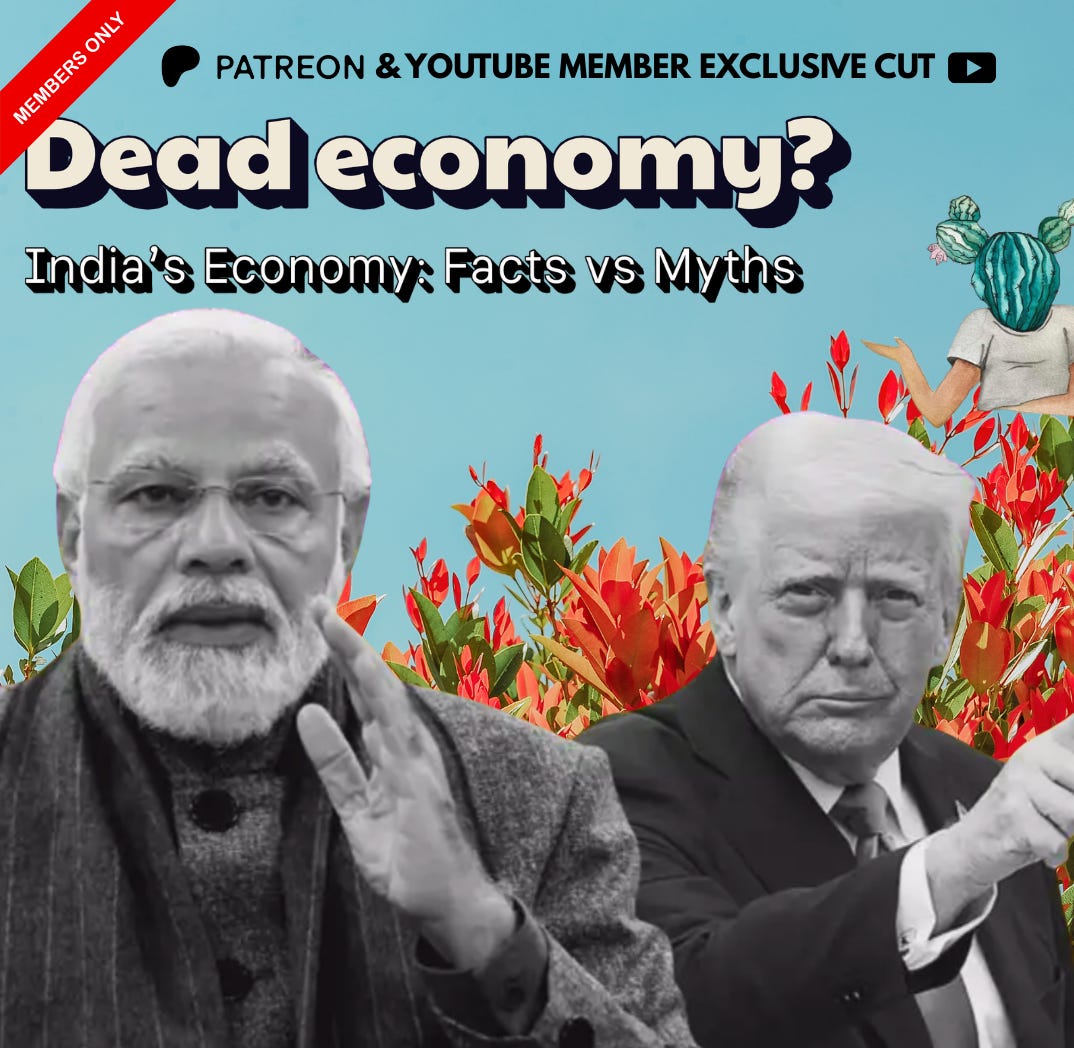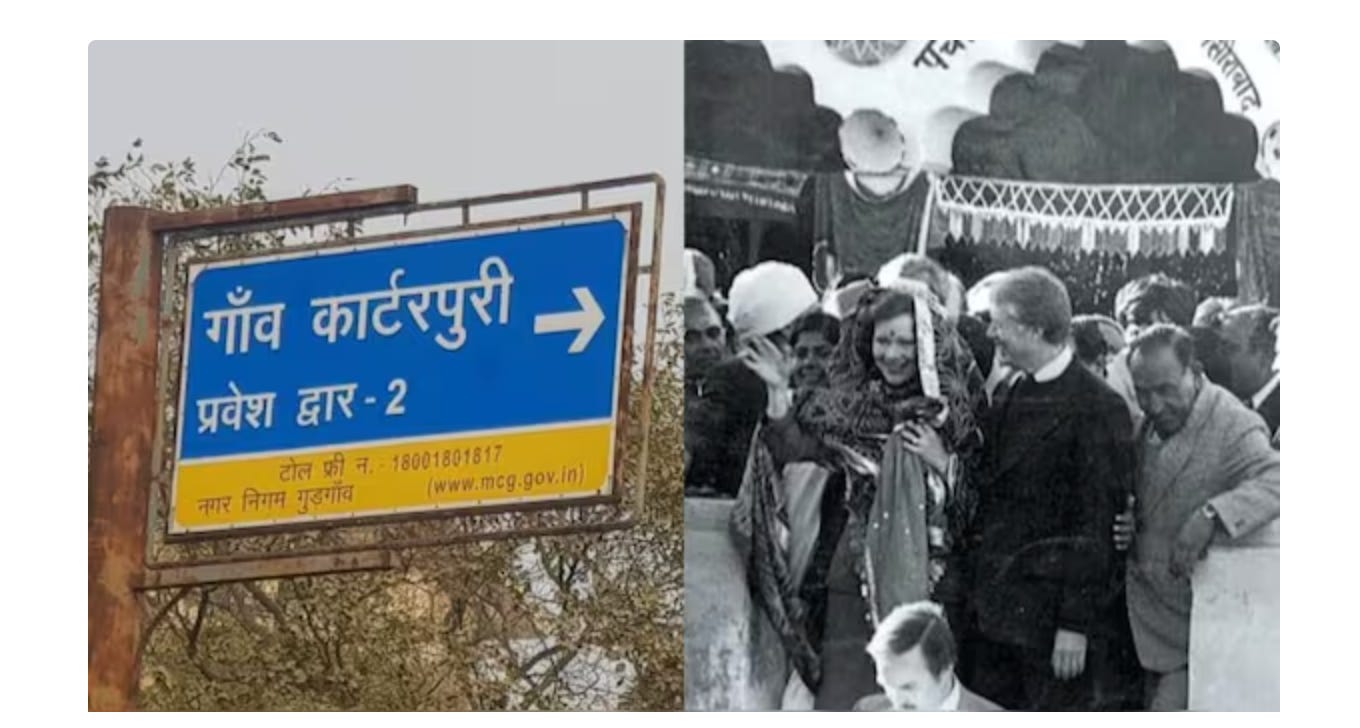Love in the times of Tariff War
And the Comic Tragedy of Broccoli in a Samosa
Richard Nixon’s 1969 trip to India was so icy that he called Indira Gandhi an “old witch” on tape and sulked about the food and the lack of air-conditioning, reducing a state visit to the theatre of a moody tourist who felt he had been scammed.
In India, the words of an American president are more than just remarks. A compliment becomes a national headline, an insult a national emergency. Whatever he says about India seeps into front pages, into the chatter at tea stalls, and finally into Parliament as ammunition.
I remember as a child when Bill Clinton arrived in my home state of Rajasthan; he was welcomed like a medieval king inspecting his fiefdom. Jimmy Carter, after a single stop near a village in Delhi, was elevated to “Carter the Dharti Putra” (Carter The Son of Soil) and the village he visited renamed itself Carterpuri. Barack Obama quoted Shah Rukh Khan in Parliament and the entire media swooned, convinced that Obama secretly watched Hindi films—even though his annual list of favourite movies on Twitter never mentioned one.
This is the absurd disproportion: one stray compliment from Washington and a foreign politician becomes India’s chosen mirror, a reflection of how the nation wishes to be seen. Only when the mirror turns hostile does the illusion collapse.
Donald Trump dismissed India as a “dead economy,” announcing a 25 percent tariff on Indian goods and posting on Truth Social: “I don’t care what India does with Russia. They can take their dead economies down together, for all I care.” The insult was tied to India’s continued purchase of Russian oil, which he has made a centerpiece of his new trade wars.
Tariffs under the Trump government themselves were not unusual but the political chaos they caused in India was. The ruling party worried not only about the economic arithmetic of a tariff shock but also about the optics. Modi’s aura has long thrived on the borrowed glow of Western leaders, particularly American presidents, as if their approval were a certificate of his arrival in the global stage. Trump’s insult cracked that mirror, exposing the friendship as a loud spectacle that always looked more convincing to Indians than to Americans.
For instance when Donald Trump arrived in Ahmedabad in February 2020. Modi gave him the world’s largest cricket stadium, packed with over 100,000 spectators, dancers, and schoolchildren waving flags. Trump, delighted by the scale of his welcome, declared that “America loves India,” and described Modi as “tough” and “exceptional.” The noise was closer to a rock concert than a state visit, complete with the Village People’s Macho Man and the Rolling Stones’ You Can’t Always Get What You Want—songs that in hindsight read like ironic footnotes. Modi called Trump a “true friend.”
The spectacle was so excessive that even the menu at Sabarmati Ashram became part of the national conversation. In a gesture of fusion, the hosts served broccoli-and-corn samosas to cater to Western palates. On social media, the innovation was widely denounced as culinary vandalism; proof that in India, even diplomacy can be judged by what you stuff inside a samosa. It’s a different story that neither President Trump nor First Lady Melania ate that samosa.
Trump appeared to many in India as the ideal American president. For a section of India’s right wing, the stadium was not the finale of a spectacle but the beginning of a covenant. Trump’s disdain for “woke” culture, his suspicion of global elites, and his crusade against the so-called deep state found an eager ideological home. Even Mohan Bhagwat, head of the Rashtriya Swayamsevak Sangh (RSS)—a nearly century-old Hindu nationalist organisation that is the ideological parent of Modi’s ruling party—warned against “cultural Marxists” and “woke” people, describing them as selfish, discriminatory, and deceitful forces who used their influence in media and academia to corrode Indian society.
The Hindu Sena, a small but attention-hungry nationalist group, decided Trump deserved the treatment of a deity and performed a yagya for him. By 2020 this had matured into a career in piety. They prayed for his re-election, repeated a mantra 125,000 times after he was he survived an assassination attempt in 2024, and sacrificed firewood to protect him from Islamic terrorism, turning geopolitics into a curious extension of temple ritual.
Modi, who like Trump could never resist a rhyme disguised as a vision, sealed the alliance in slogans: Trump had “Make America Great Again” (MAGA), India would have “Make India Great Again” (MIGA), and together they would “Make Earth Great Again” (MEGA). Trump, an American president, was transformed into a kind of Mc Deity: an imported god with a taste for McDonald’s.
The unraveling began in April 2025, when a terror attack in Pahalgam killed 26 civilians. India answered with Operation Sindoor, a four-day offensive that ended in a ceasefire on May 10. Modi insisted it was a bilateral decision. Trump insisted it was his triumph, repeating nearly thirty times at NATO summits and on Truth Social that he had personally stopped the war.
In Delhi, it was sacrilege. Modi avoided naming him. Rahul Gandhi reached for the same rhyming politics once practiced by Modi and Trump, branding him “Narendra Surrender” and daring him to show half the courage of Indira Gandhi by calling Trump a liar.
Pressure is building on Modi but to think that Modi will collapse under this narrative is a limited understanding. He is a seasoned politician who knows the psychology of his base better than anyone, and he is already moving to cast himself as the leader fighting for the nation’s interests despite outside pressure. Modi has begun to turn the rupture into a statement of principle.
On August 7 in Delhi, he said, “For us, our farmers’ welfare is supreme... India will never compromise on the well-being of its farmers, dairy and fishermen. And I know personally I will have to pay a heavy price for it.” The reference to dairy was not incidental: U.S. farm lobbies have long pushed for access to India’s vast dairy market, which remains politically sensitive for millions of small producers.
A week later, in his Independence Day address from the Red Fort, he repeated the pledge: “Farmers, fishermen, cattle rearers are our top priorities... I will stand like a wall against any policy that threatens their interests.” Taken together, these speeches signaled that Modi intended to frame the tariff clash not as a setback but as a test of sovereignty. And watch out in the coming days, for there will be an information bombardment to cement this narrative, ministers will echo it in speeches, IT cells will saturate social media, and television channels will perform their part in turning a tariff dispute into a story of Modi resisting foreign influence.
The Modi–Trump saga has played out like a film, but India itself is trapped in a cinematic role. It is not strong enough to be the global hero, yet it is too large and proud to settle for the role of sidekick, a role Pakistan auditions for with great enthusiasm. The world still needs India, partly for strategy, mostly for the size of its market. In the grammar of the internet, India is the account with a billion followers. Many powers wants a brand deal, though the nagging question remains: how many of those followers are paying customers and how many are just there with empty pockets?
In the current world order, the arrival of someone as capricious as Trump has no precedent. There is no old playbook for a leader who logs his tantrums on Truth Social as if reporting rainfall. With him, every handshake looks like a ceasefire, every hug like a lease.
Hence in the current times the photo-op diplomacy of friendship begins to resemble that broccoli samosa at Sabarmati: nobody really wants it, it sits there for the cameras, and eventually it rots under the weight of its own absurdity.
If you would like to watch the full 1h 42m conversation with economist Prof. Surajit Mazumdar, it is available for members on Patreon and YouTube. Your support makes it possible for me to record these long, in-depth discussions that mainstream media rarely attempts. By joining as a member, you not only get access to extended podcasts like this one, but you also help sustain this independent work.





jab tak rahega samosa mein broccoli ...
Well written. Psychology is the driving force of Mr Modi. It works with illiterate, semi-literate and of all literate as well.